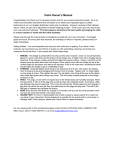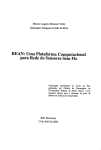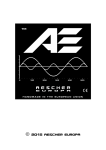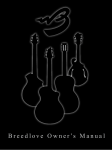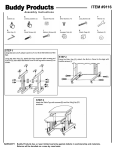Download Manual
Transcript
The instrument is shipped with a fitted bridge. Since the bridge is not in a fixed position, it may fall out of place in transit. We encouraged beginners to get assistance from a music teacher or luthier to assist with setting. Installing the bridge: • Slightly loosen the pegs. • Position the bridge so the higher side supports the G-string and the lower side supports the E-string. • Align the feet of the bridge with the two notches on of the F-holes and evenly with fingerboard. • Tilt the bridge up under the strings toward the tailpiece and set at a 90 degree angle. If you cannot tilt the bridge because the strings are too tight, loosen them slowly and tighten just enough so they can hold the bridge in place. • Set the strings in the pre-cut grooves in the bridge that were cut at the factory. • Tighten the pegs by turning clockwise and pushing in towards the peg box in order to hold the bridge in place. If the pegs are slipping please refer to Pegs section below for simple solutions. If the bridge begins to tilt forward you can very carefully pull it back towards the tailpiece with both hands while resting the lower bout of the instrument on your stomach and making sure the feet stay in position. Keep in mind some instruments come with the bridge set at a height that is not ideal for the player and will need to be adjusted. If this is the case, please visit a local technician or luthier. The tuning pegs are held in place by friction. Slippery pegs: • Push the pegs inward as you tune the strings up to pitch. This ensures that the pegs hold tighter as the tension of the string goes up. • Use peg compound to help lock the pegs in place.You can also apply chalk onto the pegs where it is inserted into the peg box. Once the bridge is set, you are ready to bring your violin up to pitch. If you are new to the violin, we encourage you to get assistance from a music teacher or luthier. WARNING: Do not over-tighten the strings, it may cause damaged to the instrument or to yourself. As you are tightening the strings to the correct pitch keep pulling the top of the bridge back toward the tailpiece. It will tend to lean toward the fingerboard as you tighten the strings. If you let it lean too far it will slam down and result in damage to your instrument. Tuning your violin: • G-D-A-E from low to high • For reference use a tuner or pitch pipe • Start by tuning the A string first. The A string is the second highest pitch and the second string. • Use a tuner or pitch pipe to adjust the pitch of each string using the tuning pegs or fine tuners. • Pluck the string and adjust the tension of the string by turning the peg to get relatively close to the pitch. • While rotating the peg, you will need to use firm pressure towards the peg box. • Once you are close you can use the fine tuner that is located on the tailpiece to get an exact match of pitches. • Repeat the steps above to tune the remaining strings in the following order: G, D, and E. • Check intonation accuracy by playing each consecutive pair of strings together: G-D, D-A, and A-E. Make any adjustments that may be necessary with the fine tuners. In order to produce a sound from the bow, you must tighten and rosined the bow hair. WARNING: Do not over-tighten the bow, it may result in damage. Always loosen the hair when storing the bow. Preparing the bow: • Turn the screw at the bottom of the bow to adjust the bow hair. • Ideally the hair should be approximately a quarter of an inch distance from the low point of the curve of the bow. For some it is more and some it is less depending on how the player plays. • Carefully scratch the entire surface of the new polished rosin with a pocketknife or sandpaper until the rosin is dull. The duller it is, the quicker it will be to apply to the bow. • Apply the rosin evenly to entire length of the bow hair before use. On a new bow, you may continue application for approximately five to ten minutes. Test the bow to determine if the rosin is adhering to the bow hair by placing the bow on the strings and playing a few notes. If there is no tone or volume emitting from the strings, the bow is not grabbing the strings enough to generate a tone. Continue to apply more rosin until you’re getting a clear tone. Horsehair Note: New strings will require some stretching before they settle in and hold pitch. Try pulling the strings slightly upwards after tuning to pitch. This can take some of the slack out of the strings and help accelerate the settling in process for new strings. Screw Frog Thank you for purchasing a Cecilio instrument. Please read through this manual for valuable information and to familiarize yourself with your new instrument. You can also visit www.ceciliomusic.com for more information. First, inspect your instrument. If your instrument is damaged or is incorrect, please contact your seller immediately for replacement or refund. All Cecilio instruments are handcrafted instruments that are tested at our factory and set up by skilled technicians at our Los Angeles distribution center prior to shipping. Please note that string instruments are delicate and we de-tuned them to protect them during transit. As a result, the bridge and sound post may have fallen out of place. If this occurs, you may need to have your new instrument adjusted by a skilled luthier or music teacher. Other Helpful Hints • Avoid storing your violin in extreme hot or cold locations and in extreme high or low humidity • Avoid leaving your violin in direct sunlight or in the trunk of a car on a warm day • Use of benzene, alcohol, thinners, or aerosol sprays to clean your violin will result in damage • Only use a soft, dry cloth to clean regularly • Clean your violin after use to prevent any rosin buildup on strings Scroll Safety Tips • Maintain adequate distance when playing your violin to prevent harm from bow • Keep your bow in hand when not in use to prevent damage and danger from occurring Pegs Nut Fingerboard Bridge F-holes Fine Tuner For additional assistance please contact Office: (877) 232-4546 or (909) 581-6190 Hours: Mon-Fri 9:00AM - 6:00PM PST Email: [email protected] www.ceciliomusic.com Tailpiece Chin rest End pin


